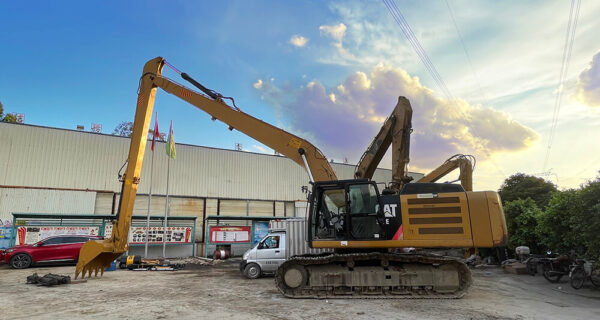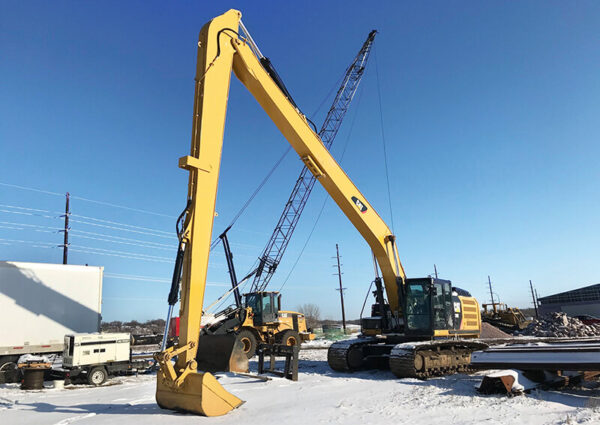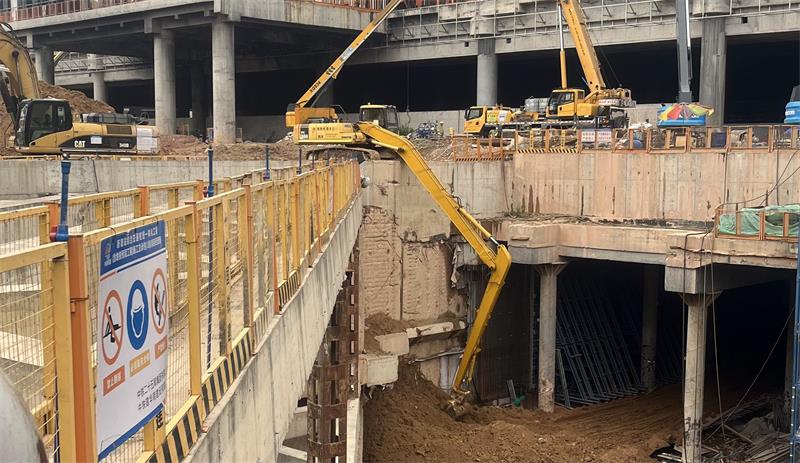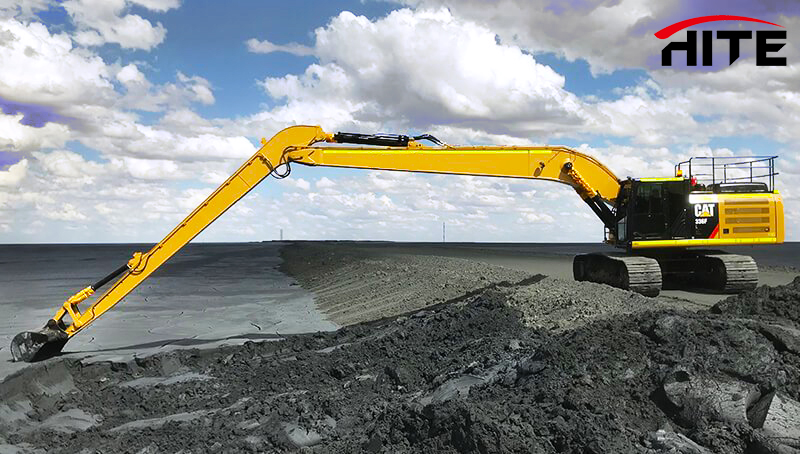Excavators are versatile and powerful machines used in various construction and excavation projects. The long reach boom, an essential component of an excavator, allows operators to extend their reach and efficiently handle tasks that require an extended reach. To ensure optimal performance, it is crucial to perform regular maintenance on the excavator’s long reach boom. In this article, we will outline important daily maintenance tips that will help maximize the lifespan and efficiency of the long reach boom.
-
Visual Inspection
Performing a visual inspection of the excavator’s long reach boom before each use is a crucial step in its maintenance routine. Carefully examine the boom for any signs of wear, cracks, or damage. Look for loose or missing bolts, hydraulic leaks, or any irregularities that might affect the boom’s structural integrity. By identifying and addressing issues early on, you can prevent potential breakdowns and costly repairs.
-
Lubrication
Proper lubrication is essential to keep the excavator’s long reach boom operating smoothly. Regularly lubricate all the moving parts of the boom, such as joints, pins, and bushings. Ensure that you use the recommended lubricants and follow the manufacturer’s guidelines for lubrication frequency and quantity. Adequate lubrication reduces friction, minimizes wear and tear, and extends the lifespan of the long reach boom.
-
Hydraulic System Maintenance
The hydraulic system plays a vital role in the functioning of the excavator’s long reach boom. Daily maintenance of the hydraulic system is necessary to ensure optimal performance. Check hydraulic fluid levels and inspect the system for any leaks or damaged hoses. Top up the hydraulic fluid if necessary, and promptly address any leaks or defects to prevent potential malfunctions.
-
Cleaning
Regular cleaning of the long reach boom helps remove dirt, debris, and corrosive substances that can cause damage over time. After each use, use a high-pressure washer or a hose to clean the boom thoroughly. Pay close attention to areas that are more susceptible to accumulation, such as joints and crevices. Be cautious not to direct high-pressure water onto sensitive components, such as electrical connections or hydraulic seals, to avoid damage.
-
Boom Alignment
Proper boom alignment is crucial for smooth operation and efficient digging. Daily checks should be conducted to ensure that the boom is aligned correctly. Use the excavator’s control system to verify that the boom is operating in a straight line without any noticeable deviation. Adjust the alignment if required, following the manufacturer’s guidelines. A misaligned boom can cause excessive stress on components, leading to premature wear and potential failure.
-
Grease and Tension Track System
The track system is another vital component of an excavator. Regularly grease the tracks to prevent corrosion and maintain smooth movement. Inspect the track tension and adjust it if necessary, ensuring it meets the manufacturer’s specifications. Properly tensioned tracks enhance stability, reduce wear on the undercarriage, and provide better control over the long reach boom’s movement.
-
Check Wear Parts
Wear parts, such as teeth, cutting edges, and buckets, play a significant role in the excavator’s efficiency. Regularly inspect these components for signs of wear and replace them when necessary. Worn-out wear parts can lead to decreased productivity, increased fuel consumption, and additional stress on the excavator’s long reach boom.
Conclusion
Daily maintenance of the excavator’s long reach boom is crucial to ensure optimal performance, extend its lifespan, and prevent costly repairs. By following these maintenance tips, operators can maintain the boom’s structural integrity, enhance safety, and maximize efficiency. Regular visual inspections, lubrication, hydraulic system maintenance, cleaning, boom alignment, track system maintenance, and wear part checks are essential tasks that should be included in the daily maintenance routine. Investing time and effort in these maintenance activities will pay off in the long run, as it will help you avoid unexpected breakdowns, improve productivity, and reduce downtime.
Additionally, it’s important to note that while daily maintenance is crucial, it should not replace regular scheduled maintenance and servicing as recommended by the manufacturer. Following the manufacturer’s guidelines and adhering to the recommended maintenance intervals will help ensure the excavator and its long reach boom remain in optimal condition.
Moreover, it’s essential to train operators on proper handling and maintenance procedures for the long reach boom. Operators should be familiar with the machine’s manual, understand the maintenance requirements, and be able to identify potential issues during their daily inspections. Encouraging operators to report any irregularities or concerns promptly can help prevent further damage and allow for timely repairs.
In conclusion, the daily maintenance of the excavator’s long reach boom is essential for its optimal performance and longevity. By conducting visual inspections, lubricating moving parts, maintaining the hydraulic system, cleaning the boom, checking boom alignment, greasing and tensioning the track system, and inspecting and replacing wear parts, operators can ensure the excavator operates efficiently and safely. Remember, a well-maintained excavator’s long reach boom not only reduces the risk of unexpected breakdowns but also enhances productivity, lowers operating costs, and extends the overall lifespan of the equipment.









Leave A Comment